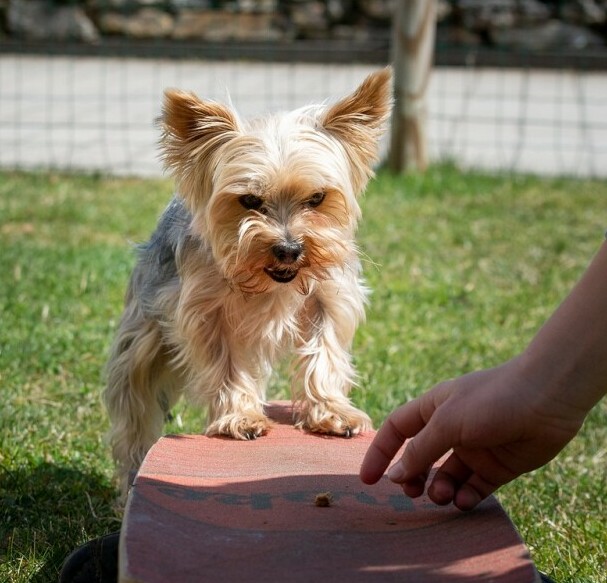Hi everyone, Bob here to share some training tips for our beloved canines! I can say from experience with my 13-year-old ‘Puppy’ that training is an ongoing, life-long adventure. Let’s get started, shall we!
If you’re bringing a new four-legged friend into your home, there’s no better time to start training than right now. It’s much like setting oneself up for success in any endeavor—the earlier you begin, the better. Puppies are like sponges, absorbing everything they experience, making the earlier months ideal for setting the tone for their adult behavior.
But this isn’t just about teaching dogs basic commands; it’s about establishing a strong, loving bond with them. That’s where positive reinforcement comes in. It’s about rewarding your furry friend for making the right choices. This approach does more than encourage good behavior—it fosters a mutual respect that will last a lifetime.
And you know what? Our delightful companions deserve nothing less than a training experience that’s fun and rewarding. So, we’re going to focus on approaching training with patience, consistency, and a dash of creativity to keep those tails wagging. Prepare to embark on a rewarding journey that will enhance the bond between you and your dog while creating a cooperative and harmonious living environment. On to the next section, where I’ll be giving insights on how to build a strong training foundation!
Setting the Foundation for Successful Training
I’m going to share just why positive reinforcement isn’t just a buzzword; it’s a surefire way to encourage the behaviors you want to see more of. Imagine rewarding your pooch with tasty treats, extra belly rubs, or some additional playtime for their good deeds. Isn’t that the kind of positivity we all want?
But here’s a little secret: consistency trumps intermittent efforts every time. For training to really stick, you’re going to find out about using the same commands and cues every time. And it’s not just you—everyone in the household has to be on the same page to avoid confusing your four-legged student.
Now, don’t worry too much about making things complex. Training sessions should be the highlight of your dog’s day, and keeping them short and lively will make sure of that. Several short sessions sprinkled throughout the day beat one long, drawn-out ordeal that could end up boring both you and your pup.
In my opinion, setting a solid foundation during dog training is a bit like building a house. Use quality materials and the right techniques, and you’ll construct a strong, happy home for both your dog’s behavior and your relationship with them. Now, that’s something to bark about!

Advanced Training Strategies and Socialization
So you’ve got the basics down, and you’re ready to step up your game. I’m here to help you with more sophisticated training techniques that will take your dog’s skills to the next level. These strategies aren’t just about teaching your dog new tricks; they’re about fostering a deeper bond between you and your furry friend.
Patience and persistence are your best allies when it comes to dog training. Sometimes, it feels like you’re not making progress, but trust me, with consistent effort, things will click. Your first attempt doesn’t need to be your last—keep tweaking your approach until you find what works best for you and your dog.
Making commands as clear as possible is crucial. Complicated or vague commands can confuse your pooch, so stick to simple one-word cues. Choose something that resonates with you and your dog, keep it consistent, and you’ll notice how quickly they catch on.
Socialization should take center stage in your dog’s life from a young age. Exposing your dog to different people, other animals, and new environments is key. This exposure helps them become well-rounded and prevents behaviors born out of fear or aggression. You’re going to find out that a well-socialized dog is typically a happy and confident companion.
If you want to take socialization further, consider group training classes. These are excellent for meeting other dogs and people, plus they add a layer of distraction that you can’t always replicate at home. It’s a fantastic way to reinforce commands in a more challenging, yet controlled environment.

Navigating Behavioral Challenges and Seeking Expert Assistance
Alright, now that you’ve got a good handle on some training strategies, let’s talk about what to do when things don’t go according to plan. I’m going to help you understand how to tackle those stubborn behavioral issues that test your patience.
First off, don’t worry too much about occasional hiccups in your dog’s behavior. It’s all part of the learning curve. If Fido grabs your slipper instead of his toy, guide him gently towards making the right choice next time. Offer him a chew toy energetically, turning his attention away from your footwear. It’s all about redirection, not reprimand!
Now, let’s say your dog still shakes like a leaf during thunderstorms or recoils at the sight of strangers. These are moments for desensitization tactics to shine. Introduce the scary stuff gradually—maybe that’s recordings of thunder played at a low volume or distant greetings with strangers. Pair these sessions with something they adore, maybe belly rubs or a favorite snack, and you’re on your way to big changes.
However, I’m here to remind you that your first attempt doesn’t need to be your last—and it certainly doesn’t have to be done alone. If the struggle starts to feel a bit more than you can chew, it might be time to call in a pro. Dog trainers and behaviorists are like interpreters; they bridge the communication gap between you and your pup with skill and understanding.
In the end, remember that the journey with your four-legged friend is a marathon, not a sprint. Celebrating the small victories is key, and patience is a virtue that always pays off when it comes to dog training.
I’ve got my fingers crossed for you and your canine companion! If you’ve got questions or want to share some of your training triumphs, I’d love to hear from you. Drop a comment, and let’s keep the conversation going. Good luck, and give your pooch an extra pat from me, Bob!

I love this article. The information is priceless especially for first time parents of a furry baby.
Thank you so much for your kind words! I’m delighted to hear that you found the article helpful, especially as a first-time pet parent. It’s always a joy to provide valuable information to fellow pet lovers navigating the journey of pet ownership. If you ever have any questions or topics you’d like to see covered in future articles, please don’t hesitate to reach out. Wishing you and your furry baby all the best on your journey together!